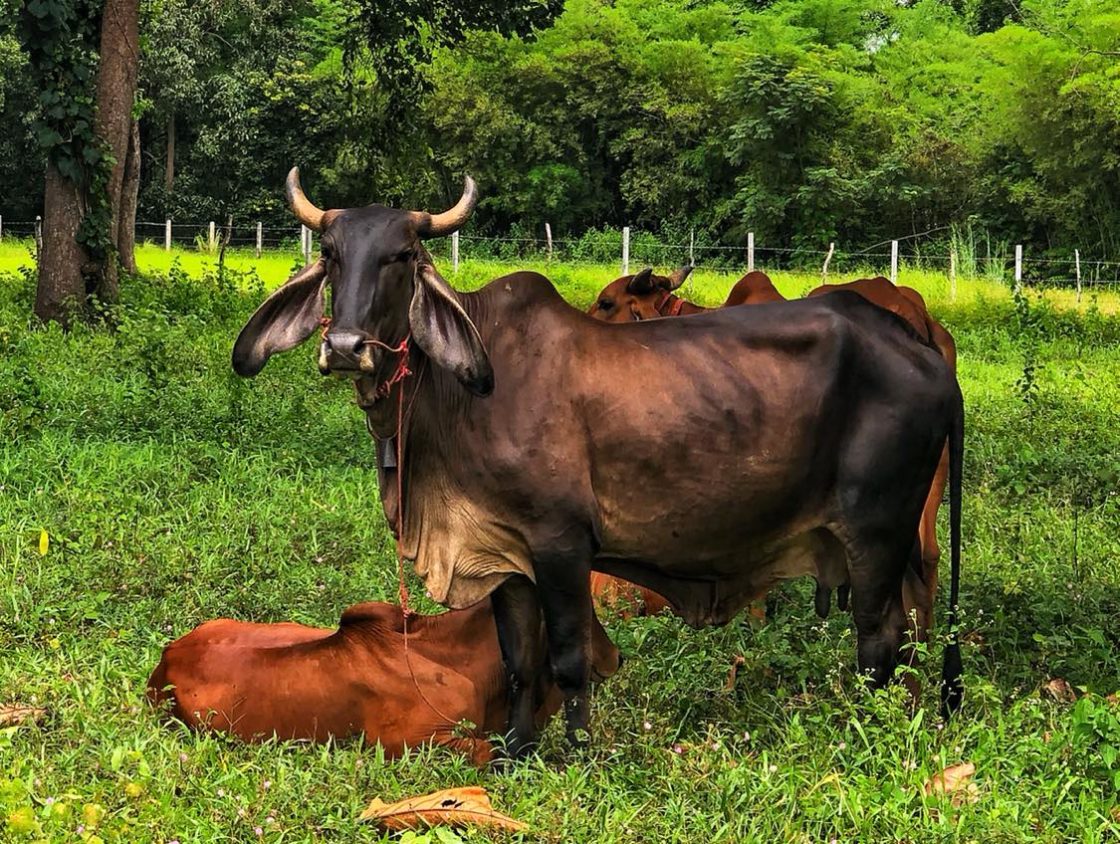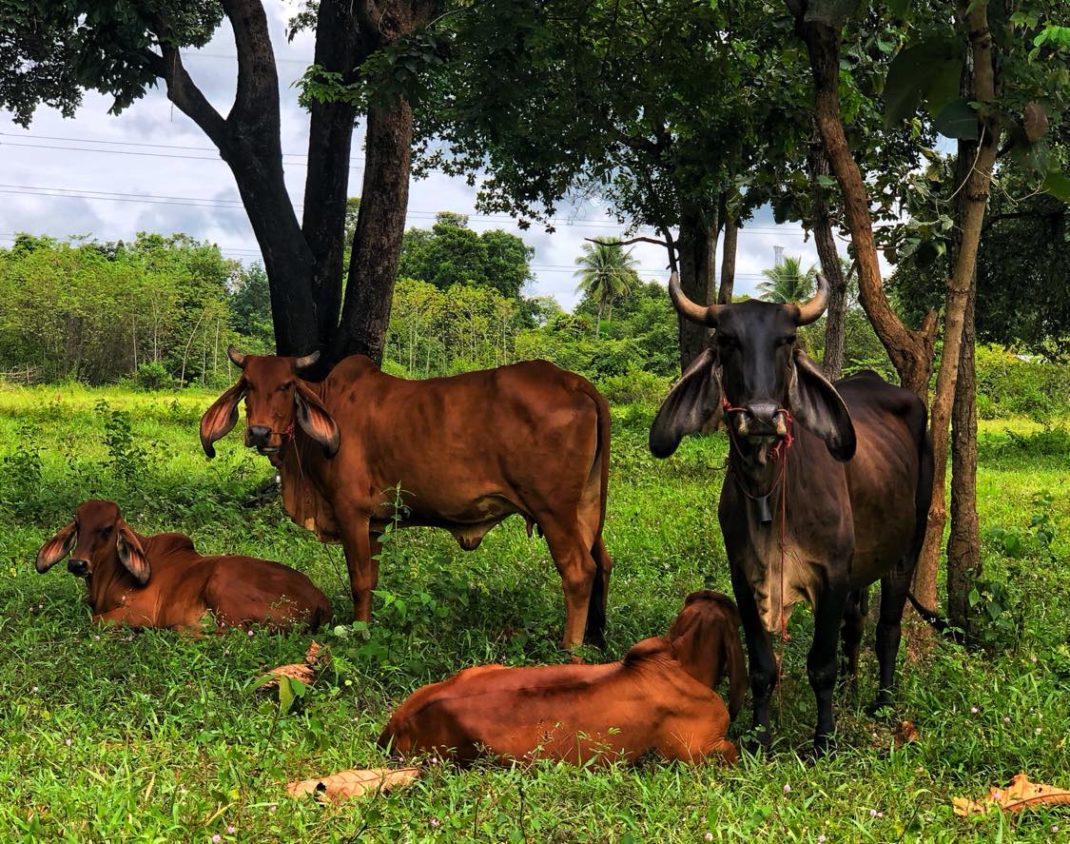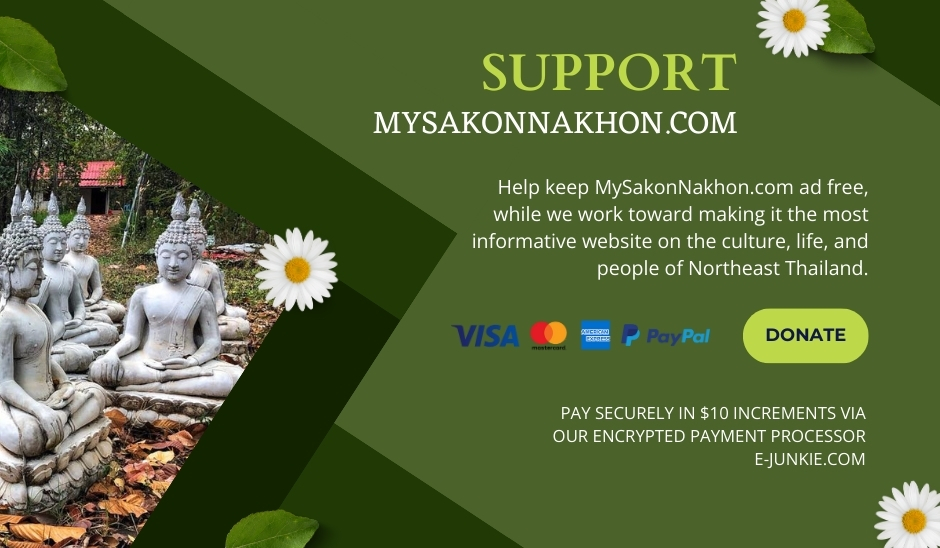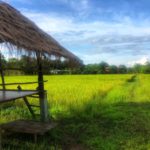
Northeastern Thailand Cattle Breeds in Sakon Nakhon
- Thai Culture
- Thai Nature
-
Oct 01
- Share post

Thanks to the Pon Yang Kham breeding farm, Sakon Nakhon is known for its high quality cattle (and beef). The cattle that are native to Sakon Nakhon and Northeastern Thailand are Brahman Cattle, descendents of the sacred Brahman cattle of India — which can be identified by the hump on their back.
In Sakon Nakhon, these cattle are known as Kho-Isaan (โคอีสาน), and they are one of four native Thailand cattle breeds — the other 3 being, Kho-Khaolumpoon (northern Thailand), Kho-Lan (central Thailand) and Kho-Chon (southern Thailand). Kho-Isaan were bred with the best beef producing French cattle breeds, Charolais and Limousin, at the Pon Yang Kham farm to create succulent Thai beef that rivals the famous Wagyu beef of Japan.
Black Tajima cattle, one of the four Japanese breeds used to produce Wagyu beef, is also bred in Sakon Nakhon. With help from the Phu Phan Royal Development Study Centre, farmers have developed Phu Phan black cows by crossbreeding native Sakon Nakhon cows with Tajima Japanese cows. Interestingly, it’s been reported that when raising this new high quality beef breed, the cattle are fed a regular diet of sato — a traditional Isaan wine that villagers make by fermenting sticky rice.

While the Brahman cattle of Sakon Nakhon don’t have the same type of sacred history as the Brahman cattle of India (where they are associated with the god Shiva), they have long been a highly revered animal, due to the efficient manner in which they can transform grass and rice husks into milk and beef. It’s been shown that only a single rai of land, less than ½ an acre, can be used to raise 1.5 head of cattle or produce 10 liters of milk a day from adult cows. That is without any additional feed, the cattle simply grazing on the land.
A Sakon Nakhon villager with a few rai of rice fields, may raise a few head of Kho-Isaan cattle, having them graze on the harvested field for about 7 months out of the year, since most farmers are not next to canals and can only cultivate one rice harvest. Cattle prices vary wildly when sold (depending on weight and lineage), but a farmer might average around 40K baht for an adult cow, and 20K for a calf. Bulls command a higher price, with professional breeders sometimes selling them at upwards of a million baht.
Cattle of course were also traditionally put to use as farm workers in Northeastern Thailand, along with their cousins the water buffalo. It’s believed they have evolved special traits suitable to the frequent hot and arid conditions of Northeastern Thailand (historians say that the first Brahman cattle were brought here thousands of years ago). For example, the loose skin you see hanging from the lower part of their neck allows them to drink and store more water when it’s available.
Isaan elders have passed down stories, from generation to generation, honoring the importance of Kho-Isaan, including one well-known poem that reads:
Set the cattle free from their harness,
Let them rest from the heavy loads
and graze under the bright sky.
Cattle are born to be friends of farmers,
pulling our carts untiringly.
- The Royal Ploughing Ceremony in Thailand – A History - May 8, 2024
- Dying Well the Buddhist Way in Thailand - May 7, 2024
- Comforting Words for the Brokenhearted in Thailand - May 6, 2024




